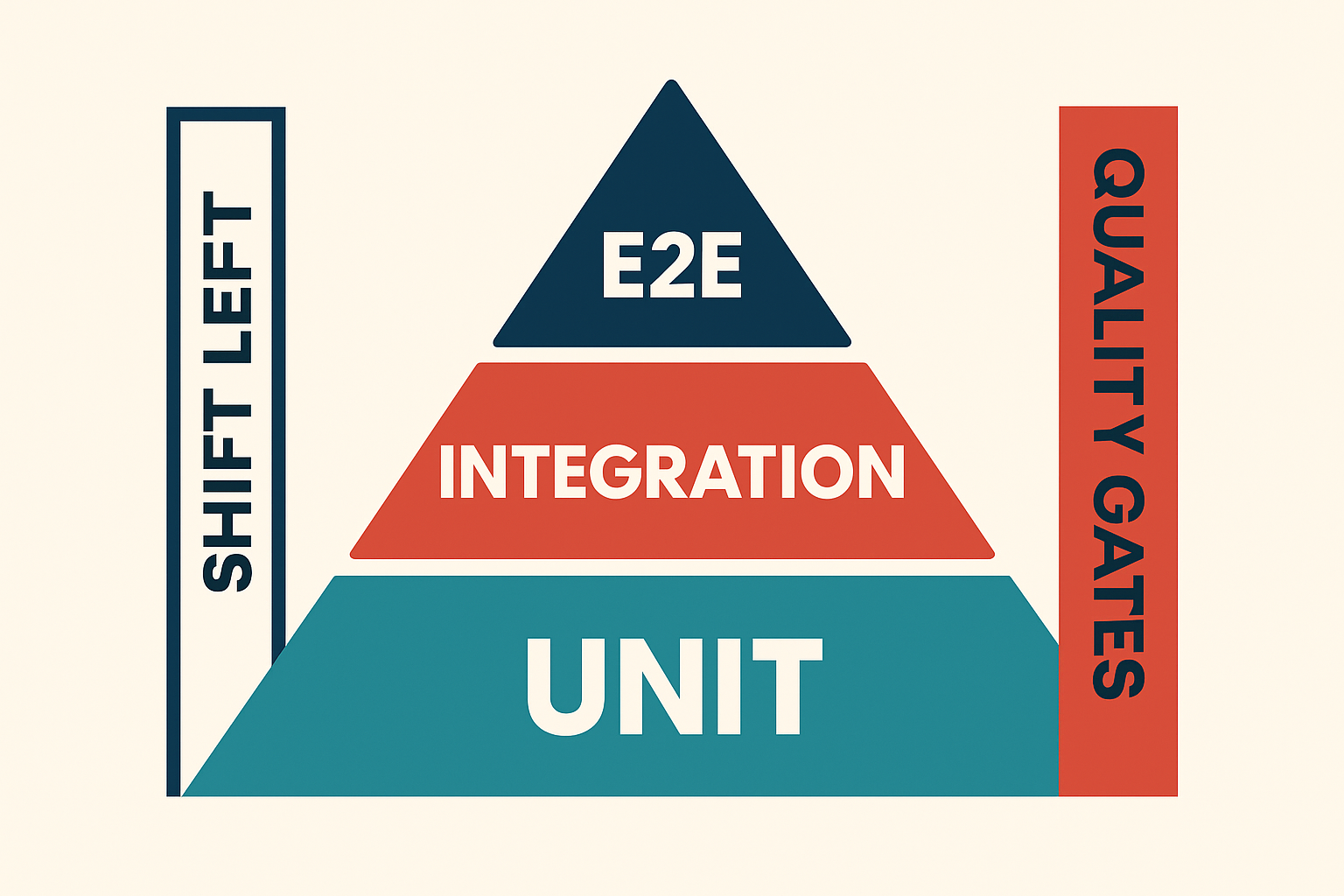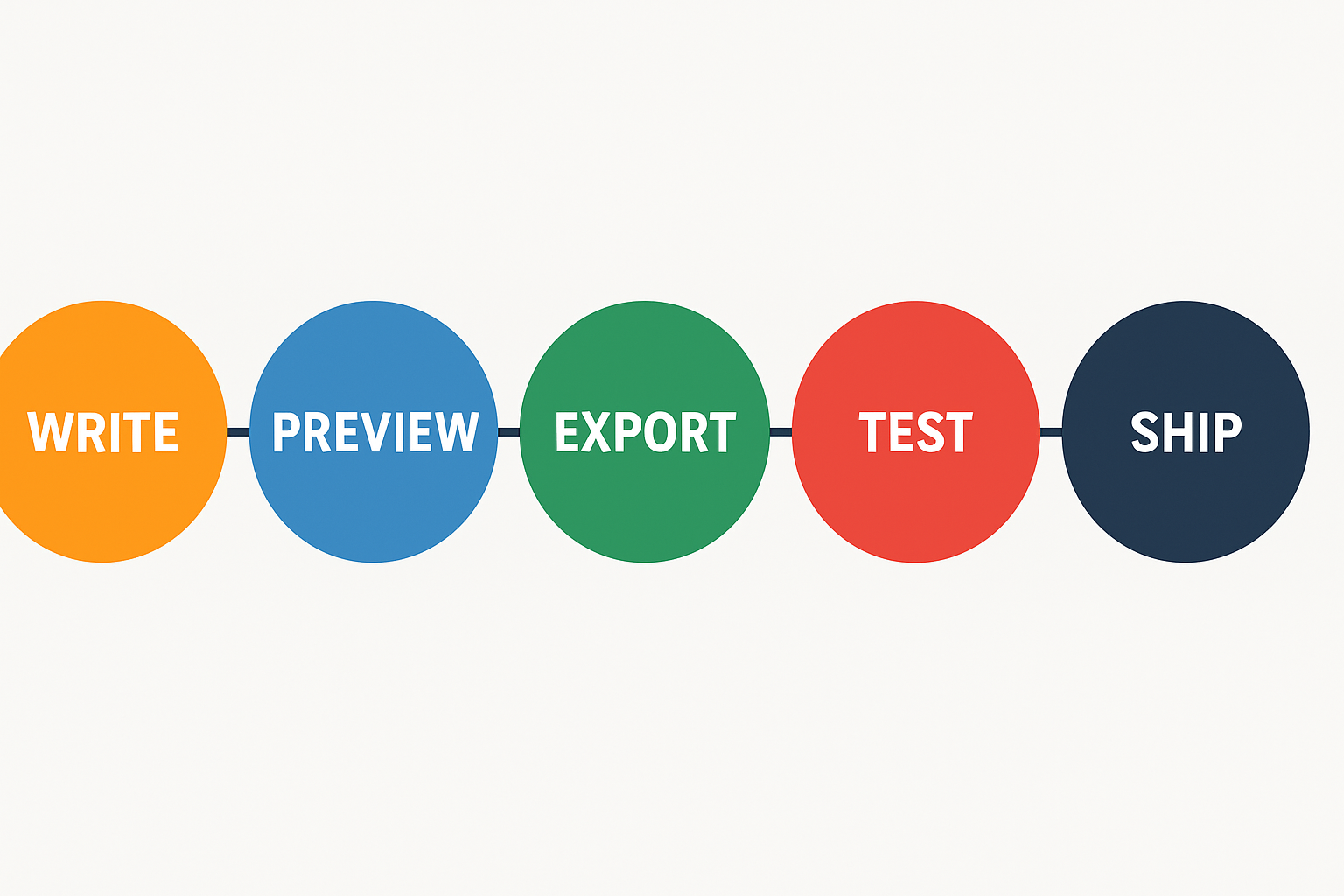Web Application Testing 2025: Complete Playbook
Web application testing is the systematic validation of a web app's functionality, performance, security, accessibility, and usability to reduce risk and accelerate delivery. This 2025 playbook distills proven strategies, tools, and checklists you can apply this week.
Executive summary: why web application testing matters in 2025
Customer expectations keep rising, release cycles keep shrinking, and the cost of defects grows with each handoff. Modern teams need a pragmatic approach to testing web app changes that balances speed with safety.
Attack surface is expanding
OWASP keeps cataloging common risks for web apps; treating security as a first-class test axis is now essential.
Performance drives revenue
Core Web Vitals like LCP and INP correlate with user satisfaction and conversion.
Accessibility is table stakes
WCAG 2.2 AA compliance is increasingly required for large organizations and public services.
Content quality drives outcomes
Conversion-critical copy (especially headlines) affects comprehension, CTR, SEO, and even CLS stability.
ROI comes from fewer regressions, faster MTTR, and higher conversion. A balanced mix of web based testing in software testing practices—unit through E2E—reduces rework and supports continuous delivery.

The test pyramid: wide at unit, slimmer at integration, minimal but meaningful E2E
Testing scope and taxonomy: what to test (and what not to)
Define the surface area early to prevent blind spots. Balance website functional testing, web UI testing, APIs, performance, security, accessibility, and usability. Avoid duplicating coverage at slow layers when a fast layer already provides confidence.
Functional and regression testing
Start with core flows that map to revenue or compliance. In web application manual testing, enumerate happy paths, sad paths, and edge cases. Codify these as a lean regression suite that evolves with features.
- Checkout, authentication, profile edits, billing, and key CRUD paths
- Business rules: discounts, entitlements, multi-currency, error handling
- Smoke tests to validate deploys in minutes
UI and cross-browser testing
Ensure consistent layout and behavior across browsers, devices, and viewports. Use web ui testing tools for responsive checks and online browser compatibility testing to spot rendering differences.
- Critical templates: home, product, cart, checkout, dashboard
- Mobile-first: test common viewports and touch interactions
- Prevent CLS with stable fonts, reserved media dimensions, and skeletons
Performance and reliability
Set targets tied to business SLAs and track them release-over-release. Use web application performance testing tools to define load, stress, and soak tests, then watch Core Web Vitals.
- Load: sustained RPS under normal traffic
- Stress: spike-and-recover characteristics
- Soak: memory leaks and throughput over hours
Security and privacy
Combine automated scans with periodic manual assessments. Include auth flows, session management, and data protection. Treat web application vulnerability testing and penetration testing for web applications as recurring practices, not one-offs.
Accessibility and usability
Commit to WCAG 2.2 AA. Augment automated checks with keyboard navigation, focus order, and screen-reader passes. Close the loop with lightweight usability sessions using website usability testing tools to run a site usability test.
Strategy first: risk-based plans and the test pyramid
Translate product risks into a balanced test strategy. Coverage should follow risk, not habit. Use a pyramid: wide at unit, slimmer at integration, minimal but meaningful E2E.
Identify critical user journeys and failure modes
Apply an impact × likelihood matrix. High-impact and high-likelihood scenarios get automation budget first. Partner with engineering for a practical web developer test inventory and loop in a qa web tester for edge cases.
- Map journeys: acquisition → activation → retention → revenue
- Enumerate failure modes: timeouts, third-party errors, race conditions
- Decide test layer per risk: unit vs integration vs E2E
Shift-left, automation-first, and quality gates
Move checks into PRs: lint, unit, component, API contracts, and fast automated web testing. Add quality gates for coverage, performance, a11y, and security using qa automation tools for web applications.
Toolchain blueprint: what to use and when
Match goals to tool categories to avoid over/under-engineering. Pick automated testing tools for web applications that your team can maintain.
Functional/UI automation frameworks
Modern frameworks emphasize reliability, parallel runs, and rich diagnostics. Here's a concise comparison for selenium web testing, Playwright, and Cypress:
| Framework | Strengths | Best for |
|---|---|---|
| Selenium | Language flexibility, protocol standard | Large polyglot orgs, legacy support |
| Playwright | Auto-waits, browser context isolation, trace viewer | Stable E2E at scale, cross-browser CI |
| Cypress | Time travel, network stubbing, fast dev feedback | Front-end heavy apps, component + E2E |
Whichever you choose, treat web UI test automation as code: page objects or screenplay patterns, resilient locators, and hermetic tests.
API and contract testing tools
Adopt schema-first design (OpenAPI/JSON Schema). Validate contracts in CI with a test API tool and mock dependencies when upstreams are flaky or expensive.
Performance and load testing tools
Pick load generators that match your stack and traffic model. Use load testing of web application scenarios for peak events and load testing website tools to visualize bottlenecks.
Security testing tools
Automate DAST/SAST to catch common issues continuously. Keep an allowance for manual reviews and business-logic tests using web application security testing tools and web pentesting tools.
Accessibility testing tools
Blend automated a11y scans with manual keyboard and screen-reader passes. Include color-contrast, focus management, and semantic landmarks. Treat a11y as a release gate.
Implement UI test automation step by step
Follow these steps to go from zero to stable web UI test automation in CI.
Pick a framework
Choose Selenium, Playwright, or Cypress based on team skills and app needs.
Design selectors
Add data-testids and resilient locators; avoid brittle CSS tied to presentation.
Stabilize waits
Prefer auto-waits and deterministic state checks over arbitrary sleeps.
Model pages
Adopt page objects or screenplay to encapsulate flows.
Seed data
Create fixtures and factories for deterministic setups.
Parallelize
Split tests by tag or shard on CI agents.
Record traces
Collect screenshots, videos, console, and network logs for quick triage.
Gate releases
Enforce must-pass checks before deploy.
Content QA for conversion-critical UI (Headlines)
Headlines are high-risk, high-leverage. They guide comprehension, influence SEO, and often sit in the largest contentful paint area. A small change can help or hurt conversion and even affect CLS.
Why headlines are a high-risk, high-leverage asset
- Clarity drives task success: users act when they instantly understand value.
- Stable typography reduces CLS: predictable font loading and sizing protect layout.
- Consistency aids SEO: structure and semantics help search and assistive tech.
Run a quick web usability test or first-click test to confirm comprehension before you scale variants. Validate changes with Google's tools when you test your site on Google for performance and stability.
Design and ship headline variants fast with Pretty Headline
Pretty Headline is a free, lightning-fast headline design tool for marketers, designers, and developers. It emphasizes professional typography with Google Fonts, visual decorations (highlights, underlines, colors), and instant export to production-ready HTML, React code, or image formats. It removes delays between copywriting, design, and implementation.
✨ Design in seconds: real-time WYSIWYG editing with conversion-friendly structures.
📦 Export with certainty: ship HTML/React snippets or PNG/JPG/WebP for experiments.
🤝 Reduce handoff friction: marketing and engineering share the same artifact.
♿ A11y-aware: clear semantic markup helps automated checks pass.
Practical flow: create two headline variants in the editor, export to React, embed behind a feature flag, then add visual snapshots to lock typography. See our guide, Getting Started with Pretty Headline, and explore options in Best Free Headline Generator Tools in 2025.
Design your headline and export it as HTML, React code, PNG, JPG, or WebP

Fast headline validation workflow: Write → Preview → Export → Test → Ship
CI/CD integration and quality gates
Wire tests into pipelines, parallelize, and block risky releases with calibrated gates using automated website testing software and online web testing tools.
Parallelization and flake control
Split suites by feature or tags, shard across agents, and quarantine flaky tests. Track flake rate and require stabilization before adding new areas to E2E coverage.
Ephemeral environments per PR
Spin short-lived review apps for realistic E2E checks on every change. Expose a shareable link through your preferred url testing tool to speed stakeholder review.
Quality gates that reflect risk
Block deploys when thresholds fail: critical tests, a11y violations, performance budgets, or security regressions. Tune gates per service risk profile using web QA tools and dashboards.
Checklists, templates, and quick wins
Copy, adapt, and ship these artifacts this week.
Risk-based test plan template
Template outline for a new feature:
- Scope and goals
- User journeys and risks (impact × likelihood)
- Test layers: unit, integration, E2E
- Data and environments
- Performance and a11y budgets
- Security considerations
- Exit criteria and quality gates
Release quality gate checklist
- ✅ All critical functional tests pass
- ✅ Contract tests green; no breaking API changes
- ✅ Performance budgets met; Core Web Vitals within target
- ✅ No high/critical security or a11y findings
- ✅ Visual diffs approved for key routes
- ✅ Rollout plan and monitoring in place
Headline QA quick win with Pretty Headline
Add a 10-minute step to your content release: design variants in Pretty Headline, export HTML/React or images, add snapshots, and ship behind flags. It protects conversion while accelerating delivery.
For broader CRO strategy, see our Conversion Rate Optimization Services: Complete 2025 Guide.
FAQ
What is web application testing?
It's verifying a web app's functionality, performance, security, accessibility, and usability to reduce risk and ship faster with confidence.
How many E2E tests do I need?
Keep a small, high-value E2E suite covering critical user journeys; rely on unit and integration tests for breadth and speed.
Which tools should I start with?
Begin with a UI framework (Playwright/Cypress/Selenium), contract testing for APIs, a11y scanners, and a load tool aligned to your stack.
How do I prevent flaky tests?
Use stable selectors, deterministic waits, seeded data, mocks for external services, and quarantine-and-fix policies.
Where does content QA fit in?
Treat critical copy like code: design, preview, and export with Pretty Headline, add visual diffs, and validate via A/B and usability tests.
Ready to optimize your headline testing workflow?
Design production-ready headlines in seconds. Export as HTML, React code, or images—no signup required!
Try Pretty Headline Now →